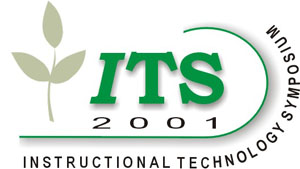Introduction Light leaf spot (Pyrenopeziza brassicae) is a serious disease of winter oilseed rape crops in the UK. Wind blown ascospores from debris of the previous season are thought to initiate infections in newly sown crops in the autumn. The pathogen then enters a hemibiotrophic phase, during which infections are symptomless. However, fungicide treatment at this stage early in the season provides the best strategy for the control of the disease. Therefore an aim of the work described was to develop a forecast that predicts, in late autumn, the risk of severe light leaf spot the following spring (and thus of yield loss at harvest). A second aim of the work was to develop a teaching aid that can be used to demonstrate the effects that changes in cultural practice can have on the development of disease epidemics. This forecast site contains a scheme for forecasting the severity of light leaf spot of winter oilseed rape crops in relation to weather and disease assessments. Development of the forecast was funded by Home-Grown Cereals Authority, Ministry of Agriculture, Fisheries and Food [MAFF], Biotechnology and Biological Science Research Council and the Perry Foundation and the forecast is currently managed and updated by the oilseeds pathology group at IACR - Rothamsted. The forecast is based on a number of crop and weather factors. The forecast uses the annual MAFF funded winter oilseed rape pest and disease survey data (collected by the ADAS (formerly the Agricultural Development and Advisory Service) and managed in a database at the Central Science Laboratory, York [CSL]). At the start of the season in October, a prediction is made for each region, which takes account of the average weather conditions expected for that region. The forecast is then updated periodically to take account of deviations in actual weather away from the expected values. The factors important in predicting light leaf spot in spring are:
These factors are combined to produce a forecast for each region of the UK (Welham et al., 1999). The website pages also contain encyclopaedic information on light leaf spot, the losses caused by light leaf spot and other oilseed rape diseases and pictures of light leaf spot symptoms. There is also information on the best sampling method for the grower to use to monitor light leaf spot incidence on individual crops. The forecast is currently being further developed under a new project called PASSWORD (Pest and disease management system for supporting winter oilseed rape decisions). This project aims to include other diseases of oilseed rape such as stem canker (Leptosphaeria maculans) and will combine disease components with an oilseed rape pest decision support system (DORIS) developed at CSL. Although the forecast has been published on the Internet since 1998, the interactive crop-specific version, which utilises active server page technology, has been available only since early 2000. The interactive version of the forecast, allowing input of cultivar and sowing date, makes the forecast prediction much more crop-specific and provides the grower with more accurate information. The interactive model also gives a prediction of the effect of an autumn fungicide application targeted at light leaf spot. One of the main benefits of the interactive version is that changing the input variables also allows "what if" scenarios to be considered and the interactive model can thus be used to demonstrate the effects of different cultural practices on the predicted level of light leaf spot. The current forecast system and the more complex DSS that will result from the PASSWORD project both have potential for use as educational tools. Demonstrations and interactive "hands-on" sessions with students have already taken place during field-visits to IACR- Rothamsted from a number of UK universities and local schools. Information on the system has also been given during lectures on epidemiology and disease forecasting as part of formal lecture series at the Universities of Nottingham (3rd year BSc students) and Bristol (MSc Crop Protection). Unlike many teaching aids, the forecast has the added benefit that it is based on real disease and weather data. Hence, the prediction is useful and "interesting" to students, particularly those from a farming background. As the forecast is Internet based, access via the world-wide-web means the system is accessible globally and can be used as an example of a crop risk prediction model even where oilseed rape is not grown as a crop. Another benefit of the Internet delivery platform is that the version viewed will be current and up-to-date. Similar models have been previously compiled into an excercise pack for graduate and postgraduate students (Francl & Neher, 1997) and the authors of this paper would expect the light leaf spot forecast model (and the future PASSWORD system) to be included in similar educational aids in the future. For further information about this paper, please contact neal.evans@bbsrc.ac.uk
References
End
|
